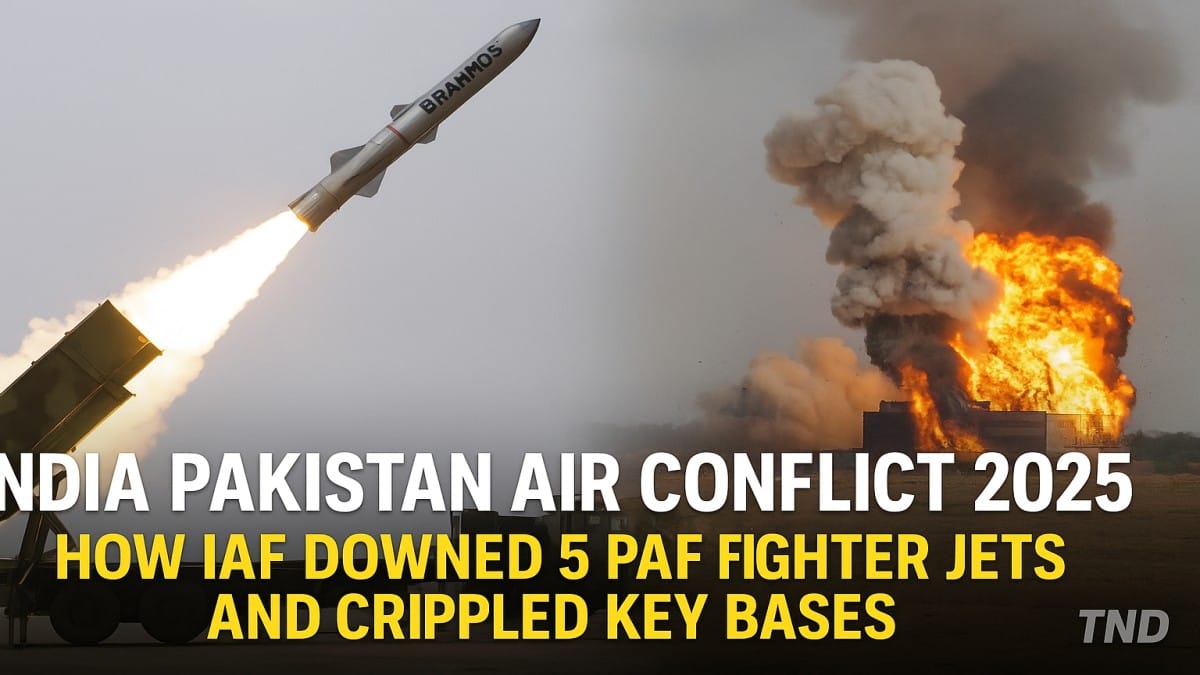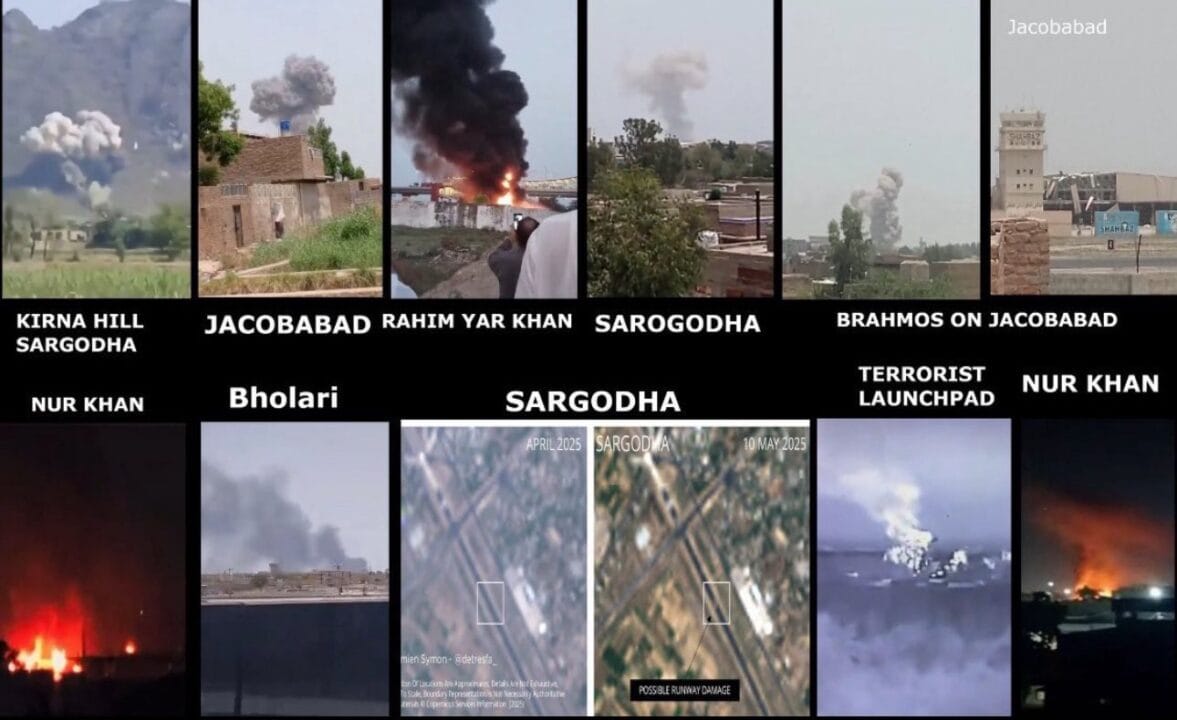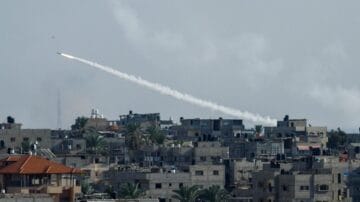
India Pakistan Air Conflict: How India’s Precision Strikes and Air Defence Neutralised Pakistani Aggression in May 2025.
In one of the most intense escalations between the two nuclear armed neighbours in recent years, India Pakistan air conflict in May 2025 marked a decisive show of strength by the Indian Armed Forces. For the first time since the deadly hostilities began, India’s Air Force Chief confirmed that the Indian Air Force (IAF) shot down five Pakistani fighter jets and one other military aircraft during fierce aerial battles. The announcement came as both sides traded accusations of cross border violations, but satellite imagery and on ground visuals provided a clear narrative of India’s military precision.
May 2025 Clashes – A Timeline of Air Dominance
The Indian retaliation was surgical, swift, and strategically devastating. The uploaded battlefield images from the conflict showcase the locations where Indian forces struck deep inside Pakistani territory, crippling key military installations and infrastructure. The targeted locations included:
- Kirna Hill, Sargodha – A known Pakistan Air Force (PAF) operational site.
- Jacobabad Air Base – Hit by a BrahMos missile, causing large scale explosions.
- Rahim Yar Khan – Strategic assets targeted with precision strikes.
- Bholari Air Base – A key PAF operational centre engulfed in thick black smoke.
- Nur Khan Air Base – Multiple fireballs lit up the night sky after successful hits.
- Terrorist Launchpads – Destroyed to prevent cross border infiltration.
Satellite images of Sargodha Air Base from April 2025 compared with those from 10 May 2025 clearly show runway damage, hampering PAF’s operational capability.

Pakistani Aircraft Losses – Heavy Blow to the PAF
During the India Pakistan air conflict, the IAF neutralised a range of high value Pakistani air assets:
1. Two F-16 Fighting Falcons – Shot down during attempted border penetration.
2. One JF-17 Thunder – Eliminated in a dogfight with Indian Sukhoi Su-30MKIs.
3. Two Mirage III Fighters – Destroyed while attempting offensive bombing runs.
4. One PAF Reconnaissance Aircraft – Shot down for violating Indian airspace.
These losses not only dealt a severe operational setback to the PAF but also dented their aerial morale.
Role of India’s Advanced Air Defence – S-400 and Akash Systems
The backbone of India’s aerial defence during the India Pakistan air conflict was its multi layered missile shield. The Russian made S-400 Triumf system, deployed in strategic northern sectors, intercepted multiple incoming PAF missiles and drones before they could strike Indian soil. The S-400’s long range capability, coupled with its advanced radar tracking, ensured a first line neutralisation of aerial threats.
Complementing this was India’s indigenous Akash Surface to Air Missile (SAM) system, which engaged short range threats with high accuracy. The Akash system’s deployment around sensitive border areas prevented Pakistani fighter jets from making deep incursions into Indian territory.
Indian Fighter Jets – Precision, Speed, and Tactical Brilliance
Indian fighter squadrons played a defining role in tilting the balance during the India Pakistan air conflict. The Sukhoi Su-30MKI proved to be a lethal dogfight champion, leveraging its superior manoeuvrability and long range missiles to down PAF jets. Dassault Mirage 2000 fighters, veterans of the Balakot airstrike, conducted precision bombing runs on high-value targets in Sargodha and Jacobabad. Meanwhile, the Rafale fighters, with their SCALP cruise missiles, added deep strike capabilities, making Pakistani bases vulnerable even far from the border.
Missile Strikes – BrahMos, the Game Changer
The BrahMos supersonic cruise missile emerged as the star weapon in this India Pakistan air conflict. Footage from Jacobabad shows massive explosions after a direct BrahMos hit on a PAF installation. The missile’s unmatched speed and pinpoint accuracy meant that by the time Pakistani radar systems detected the threat, it was already too late for interception. These strikes crippled PAF command centres and disrupted operational coordination.
Terrorist Infrastructure – Collateral No More
Indian intelligence pinpointed multiple terrorist launchpads being actively used for cross-border infiltration. These were swiftly neutralised using precision-guided munitions and air-to-surface missile strikes. By targeting these facilities during the India Pakistan air conflict, India sent a clear message – state sponsored terrorism would be met with uncompromising military response.
Strategic Message to Pakistan
The May 2025 escalation stands as a turning point in the India Pakistan air conflict narrative. India’s simultaneous use of advanced air defence systems, superior fighter jets, and precision-guided missile strikes has set a new deterrence benchmark. By targeting not just frontline assets but also deep strategic infrastructure, India demonstrated both capability and intent.
The Indian Air Force Chief’s confirmation of the downing of five fighter jets and one military aircraft was not just an operational update – it was a strategic signal that any aggression would be met with overwhelming force.
Conclusion
The India Pakistan air conflict of May 2025 has entered military history as a case study in coordinated, high-tech warfare. From the S-400’s long-range interception to the Akash system’s close-range defence, from Sukhoi dogfights to BrahMos deep strikes, India’s layered response showcased the strength of its modernised defence doctrine. With PAF suffering significant losses and key bases crippled, the conflict has likely shifted the air power balance in South Asia for the foreseeable future.












